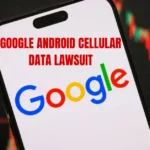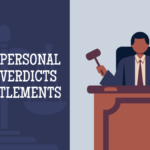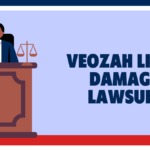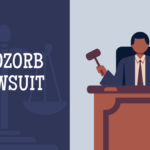Amidst the hushed corridors of legal intricacies and the devout echoes of faith, a fierce battle has unfolded – center stage: the World Outreach Church lawsuit. The clash of principles and power within this high-profile legal saga uncovers deep-rooted tensions that transcend mere courtroom confrontations. Beyond the black-and-white confines of lawsuits lies a narrative brimming with complexities and implications that resonate far beyond the walls of justice.
Enter a realm where law meets religion, where beliefs collide with bureaucracy, setting a stage for gripping revelations and thought-provoking dilemmas. As we delve into the tangled web woven by allegations and defenses, beneath it all lies a pivotal question that beckons exploration: How does such litigation not only shape our legal landscape but also ripple through societal norms? Brace yourself as we unravel these threads carefully crafted in this enthralling tapestry of conflict – one that illuminates shadows cast upon both faith institutions and legal frameworks alike. Join us on this expedition as we navigate through uncharted territories where truth merges with perception, leaving no stone unturned in understanding the enigmatic contours of the World Outreach Church lawsuit.
Unveiling the Key Players in the Legal Drama
At the heart of the legal battle lies the World Outreach Church, a prominent religious institution known for its expansive reach and influential presence within both local and global communities. Founded on principles of faith and service, this megachurch has long been revered by many for its charitable works and spiritual leadership. Conversely, facing off against them is a group of individuals who have raised allegations that have sent shockwaves through congregations and courtroom alike.
The clash between these two entities serves as a stark reminder of the complexities inherent in legal disputes involving organizations deeply intertwined with belief systems. As details emerge about past dealings and internal dynamics, questions arise not only about accountability but also about how differing values can lead to such profound conflicts. In peeling back the layers surrounding each party’s motivations and histories, one begins to discern not just legal adversaries but multifaceted institutions grappling with reputation, integrity, and perhaps even identity itself.
The court proceedings reveal a high-stakes battle of narratives, with each side presenting its version of events in a bid to sway the judge and jury. The room crackles with tension as witnesses are called to testify, their testimonies painting contrasting pictures of what really transpired behind closed doors. Lawyers spar with quick wit and cunning arguments, seeking to undermine the credibility of their opponents while bolstering their own case.
As the trial unfolds, onlookers are drawn into a web of intrigue and drama that seems lifted from the pages of a legal thriller. Allegations fly back and forth like arrows in a heated battlefield, each one aimed at piercing the heart of the other’s defense. And yet, amidst all the chaos and contention, there lingers an undercurrent of deeper significance – a fundamental clash between competing visions of justice and truth. In this courtroom clash between sacred institutions and secular authorities, it becomes clear that more is at stake than mere legal victory or defeat.
Reviewing Allegations and Legal Claims (World Outreach Church Lawsuit)
At the core of the World Outreach Church lawsuit lie a series of weighty allegations and legal claims that have ignited fervent debate among legal experts and the public alike. The plaintiffs assert that the church engaged in financial misconduct, diverting funds meant for charitable works towards personal gain. These allegations not only question the integrity of a revered religious institution but also raise broader ethical concerns about transparency within nonprofit organizations.
Moreover, delving into the legal claims unravels a labyrinthine network of statutes, contract law nuances, and fiduciary responsibilities that form the crux of this contentious case. With each legal argument meticulously dissected by seasoned attorneys on both sides, intricate details surface regarding compliance with tax regulations and adherence to corporate governance standards – shedding light on how even institutions with noble missions must navigate complex legal landscapes to uphold accountability amidst adversity. To comprehend the multifaceted nature of these claims is to grasp not just a courtroom drama but an exposition on societal expectations from entities wielding substantial influence over communities.
As the trial progresses, testimonies from key witnesses provide further insight into the inner workings of the organization under scrutiny. The defense strategy revolves around highlighting the positive impact of their client’s operations on the community and underscoring any mitigating circumstances that may have contributed to the alleged violations. On the other hand, prosecutors meticulously build their case based on evidence of financial impropriety and breaches of fiduciary duty.
At its core, this legal battle represents a clash between ideals and reality, where lofty mission statements collide with the harsh realities of corporate misconduct. As spectators watch this high-stakes drama unfold in real-time, it serves as a stark reminder that even institutions supposedly dedicated to serving the greater good are not immune to ethical lapses and legal scrutiny. Ultimately, as deliberations begin and a verdict looms on the horizon, all eyes are on the judiciary system to deliver justice impartially and hold accountable those responsible for betraying public trust.
Analysis of Court Proceedings
As the legal battle surrounding the World Outreach Church unfolds in court, intricate details emerge that shed light on the complexities of this case. One notable aspect under analysis is the presentation of evidence by both parties, each seeking to sway the court in their favor. The meticulous scrutiny of documents, testimonies, and exhibits not only serves to establish facts but also reveals the strategies employed by legal teams to construct compelling narratives.
Moreover, observing how procedural rules are applied and interpreted throughout these court proceedings offers crucial insights into how justice is pursued within a legal framework. From objections raised during cross-examinations to rulings made by the presiding judge, every decision shapes the trajectory of this lawsuit and sets precedents for future disputes. By examining these nuances, observers gain a deeper understanding of not just what transpires in courts but also why certain legal outcomes are reached – highlighting the significance of due process and judicial reasoning in resolving conflicts effectively.
Furthermore, delving into arguments put forth by attorneys representing both sides uncovers layers of legal theory and precedent that inform their positions. Whether discussing matters related to property ownership, contractual obligations, or freedom of religious expression, each argument reflects an intricate tapestry woven from statutes, case law, and constitutional provisions. This analysis showcases how broader principles intersect with specific circumstances to create a nuanced portrait of justice sought through rigorous debate and diligent advocacy in courtrooms. Ultimately, dissecting these key elements illuminates not only the World Outreach Church lawsuit itself but also larger questions about rights protection within a society governed by laws and institutions designed to uphold fairness and equity for all stakeholders involved.
This deep dive into the legal complexities of religious expression in the context of constitutional rights underscores the delicate balance that must be struck between preserving individual liberties and ensuring societal cohesion. Moreover, it brings to light how judicial decisions become crucial turning points in shaping legal precedence and interpreting the boundaries of permissible actions within a diverse and pluralistic society. The implications of such cases reverberate beyond specific litigants, setting a precedent for future conflicts and guiding the evolution of jurisprudence in areas concerning freedom of religion and belief. In essence, these legal battles serve as important milestones in our ongoing quest for justice, equality, and understanding among individuals with differing worldviews and values.
They underscore the delicate balance between protecting individual rights and ensuring social cohesion, highlighting the need for a nuanced approach to navigating complex issues in a rapidly changing world. As society continues to grapple with questions of faith, identity, and autonomy, these legal battles remind us of the fundamental principles that underpin our democratic system and uphold the dignity and rights of all individuals. By engaging with these challenges head-on and embracing dialogue and mutual respect, we can forge a path toward a more equitable and harmonious future for all members of society.
It is crucial that we weigh the importance of upholding individual rights alongside the collective well-being of society as a whole. As we confront these intricate and multifaceted issues, it becomes imperative to cultivate empathy, understanding, and open-mindedness in our interactions with others. By fostering a culture of inclusivity and respect for diverse perspectives, we can work towards building a more just and cohesive community where every individual’s rights are valued and protected. In doing so, we can pave the way for a brighter future grounded in equality, justice, and mutual dignity for all.
Impact on Community & Possible Outcomes
The repercussions of the World Outreach Church lawsuit extend far beyond legal boundaries, deeply impacting the community it serves. As the case unravels in courtrooms and headlines, members of the congregation are left grappling with uncertainty and a sense of betrayal. The trust once placed in the institution now hangs by a fraying thread as details emerge, revealing layers of complexity that challenge not only faith but also allegiance to an organization once revered.
While speculation lingers about potential outcomes, ranging from financial settlements to structural reforms within the church hierarchy, one cannot overlook the broader societal implications. The precedent set by this legal battle could reshape how religious institutions handle controversies, urging them towards greater transparency and accountability. Furthermore, as community bonds strain under this weighty revelation, questions arise about healing processes post-litigation and whether reconciliation can ever fully mend fractured relationships within a betrayed flock seeking solace amidst discord.



